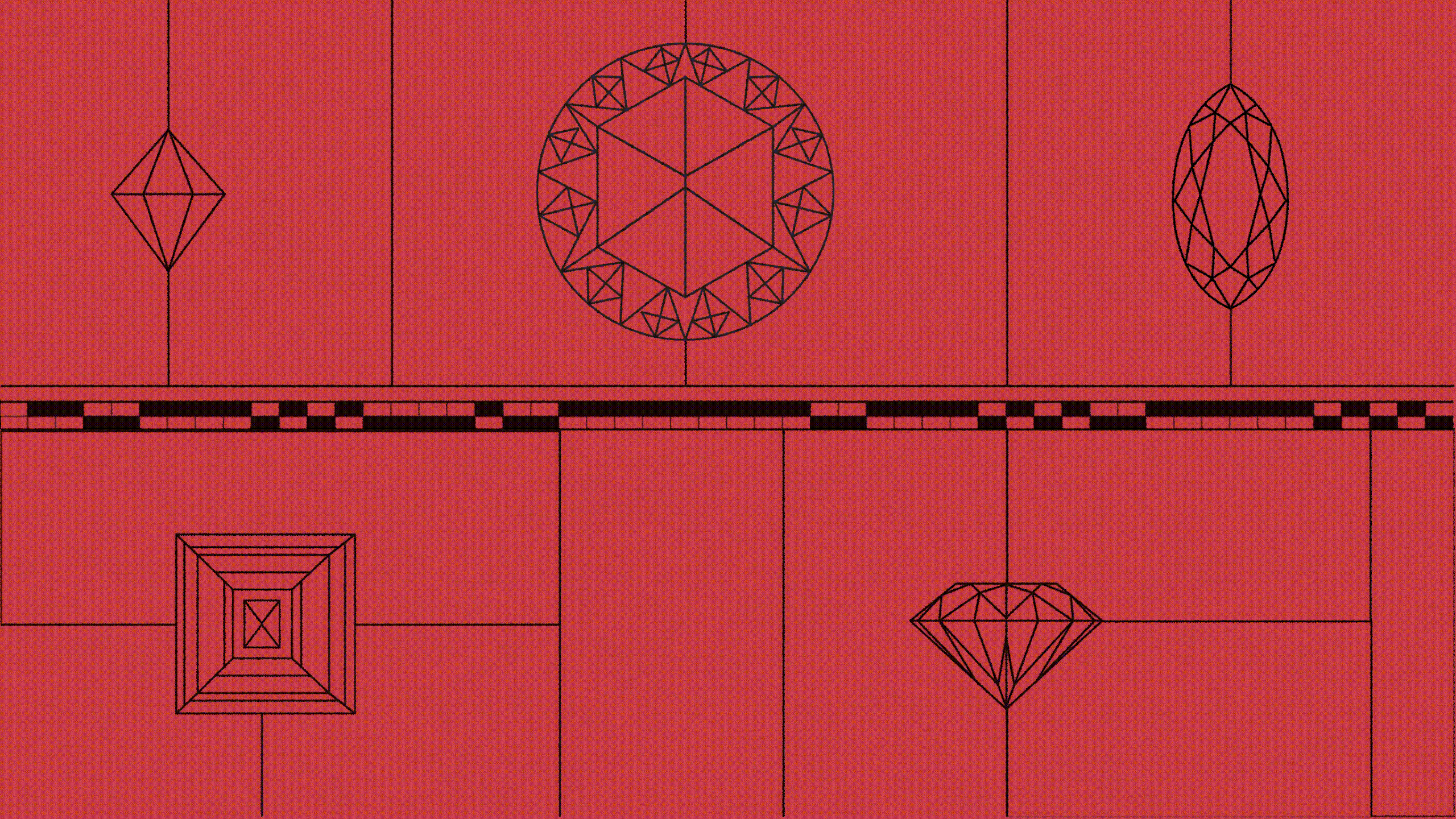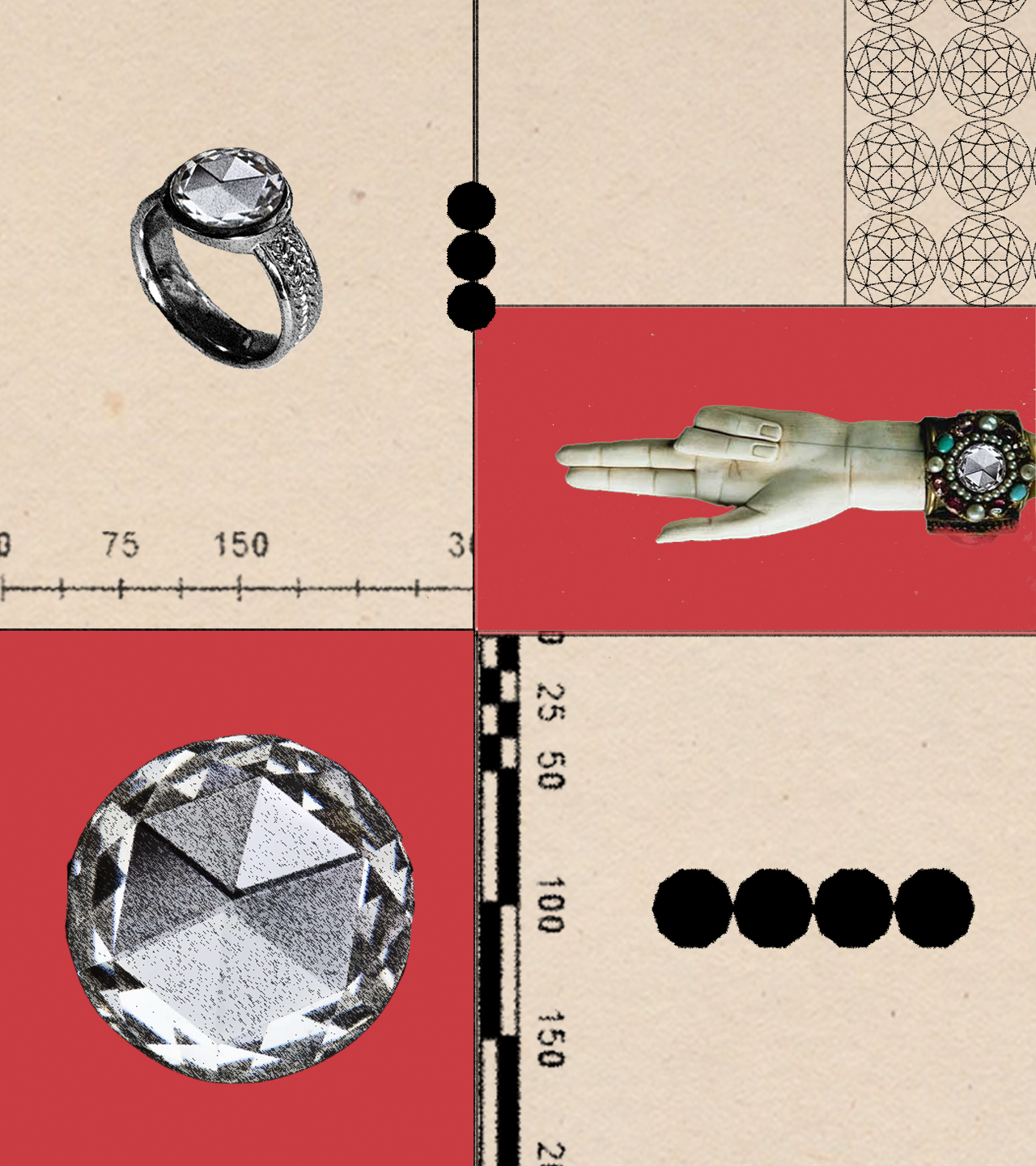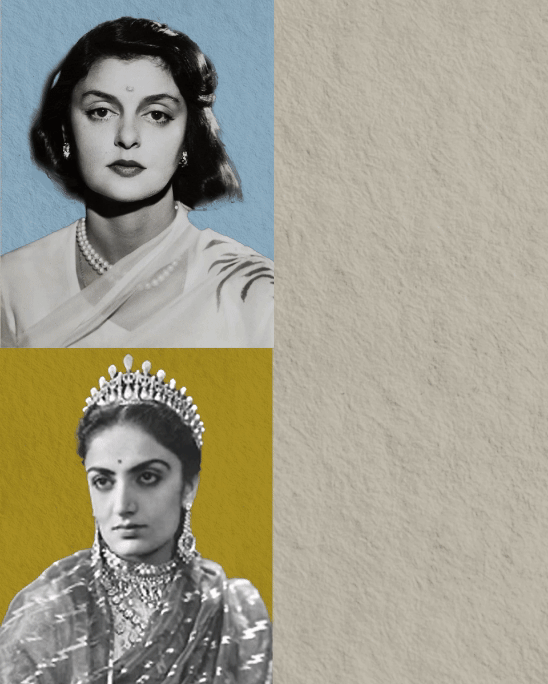From Ancient Techniques to Modern Masterpieces : The Evolution of Solitaire Cuts
The evolution of solitaire natural diamonds and their designs has transformed culture and technology for generations, making them more intriguing than ever.

Diamonds have transformed from being luxury items found in crowns and swords to being coveted household items. The modernization of the classic solitaire silhouette reflects this evolution with options for different prong settings, metal choices to additional diamond accents to enhance the brilliance of the central stone. Since their discovery and given their rarity, the natural diamond quickly became one of the most important jewels. Until around the fourth century, India was the sole source of natural diamonds, yet the desire for these precious stones was universal. Romans, Greeks and Egyptians traded with India to create exquisite jewels and adorn their antiques with them.
POINT CUT

This technique’s intention was to maintain the essence of the rough diamond without any alterations, simply by polishing it. The diamond would weigh nearly the same as the rough diamond, as very little material would be removed. While the brilliance wasn’t as sharp as today’s standards, it had a unique, minimal sparkle that signified the authenticity of the jewel.
This point-cut diamond ring is said to go back
all the way to the 12th century and is one of the oldest-surviving specimens of
what we now call a solitaire ring
One such diamond ring from the same time, currently on loan to the Metropolitan Museum of Art (MET), showcases the first-ever solitaire cut that was experimented with—the point-cut technique. This technique’s intention was to maintain the essence of the rough diamond without any alterations, simply by polishing it. The diamond would weigh nearly the same as the rough diamond, as very little material would be removed. While the brilliance wasn’t as sharp as today’s standards, it had a unique, minimal sparkle that signified the authenticity of the jewel. Solitaire, a word derived from French meaning alone or isolated, this ring, named Octahedral, which features a point-cut stand-alone natural diamond on a band depicts the architectural prominence of that era.
TABLE CUT
In the 14th to 16th centuries, the table cut diamond cutting technique was introduced, featuring a flat top with facets on the sides, resembling a table. The precious diamonds during this period were still sourced from India. One such diamond, known as the Mirror of Portugal, was said to be a table-cut.

Pictured here is a digital reconstruction of the Mirror of Portugal diamond, which in its table-cut form was set in jewellery belonging to notable royalty across Spain, England and France.
It was mined from Golconda, India– the same region that produced the famous Koh-i-Noor diamond—was initially a table-cut before advancements in cutting techniques were made. The diamond played a significant role in the political and romantic intrigues of European royalty. Dom António de Castro used it to persuade Queen Elizabeth I to support his claim to the Portuguese throne. The Queen, in turn, mounted the diamond in a gold pendant surrounded by enamelled flowers. The Mirror of Portugal had a storied history, passing through the hands of three kings of Spain, England and France. Initially weighing around 30 carats, it was later recut, reducing its weight to 25 3/8 carats by the time it became part of Cardinal Mazarin’s collection and further to 21 1/8 carats by 1791. However, the diamond disappeared permanently in the 1700s during the robbery of the French Crown.
ROSE CUT

The rose cut originated in the 1500’s and was commonly used through the Georgian and Victorian eras. Like other antique diamond cuts, they were cut by hand and meant to dazzle under candlelight.
Rose cut diamonds were a common feature of solitaire rings in the 16th and 17th centuries.
The early 19th century brought about a change in the way natural diamonds were consumed. It became fashionable, and single diamond pendants and rings became the preferred choice. This trend introduced more techniques like the rose and old mine cuts, which improved the brilliance and sparkle of diamonds, making them more appealing. This era coincided with Queen Victoria’s reign and her iconic engagement ring, featuring a snake with an emerald, popularised the concept of single-stone engagement rings as the most desired piece of jewellery.
TIFFANY SETTING AND BRILLIANT CUTS
The iconic solitaire natural diamond ring, as we know it today, was introduced by Charles Lewis Tiffany in 1886, with a six-prong setting for the natural diamond to sit on. The Tiffany setting, which experimented with a round brilliant cut, was designed to elevate the diamond above the band to enhance its brilliance.

The six-pronged tiffany setting with a brilliant cut diamond propped on it became the signature for solitaire rings 19th century onwards.Autobiograph
As time passed, more techniques were developed to enhance the brilliance of the stone. The iconic solitaire diamond ring, as we know it today, was introduced by Charles Lewis Tiffany in 1886. The Tiffany setting, which experimented with a round brilliant cut, was designed to elevate the diamond above the band to enhance its brilliance. The round cut was chosen for its symmetrical shape, which fit perfectly in the six-prong setting. This innovation changed the way diamonds were consumed and perceived. Over the years, many other cuts have been explored in the same technique.
MARQUISE CUT

Legend has it that in the 18th century, King Louis XV of France commissioned a diamond cut to resemble the lips of his mistress, Marquise de Pompadour. However, the Marquise cut, indeed named after her, was actually developed by master diamond cutter Gabi Tolkowsky in the late 20th century.
The Marquise Cut is said to be inspired by the lips of Marquise de Pompadour, the lover of Louis XV, and was commonly set in rings and necklaces.
Legend has it that in the 18th century, King Louis XV of France commissioned a diamond cut to resemble the lips of his mistress, Marquise de Pompadour. However, the Marquise cut, indeed named after her, was actually developed by master diamond cutter Gabi Tolkowsky in the late 20th century. This cut showcases the brilliance of blending traditional cutting techniques with modern precision. This cut was often used for diamonds that have elongated rough shape and a popular choice for diamond enthusiasts and jewellery designers.
As we look back on the evolution of diamond cutting techniques, we see a progression towards more advanced methods that maximised brilliance and finesse. Today, we have the most sophisticated techniques for preparing the finest diamonds, blending modern innovations with age-old traditions. Amidst the growing appreciation for vintage designs, there’s now more than ever an opportunity of embracing and pushing the boundaries of solitaire craftsmanship further. Looking ahead, while we have the freedom to create almost anything, there is a segment of the population dedicated to exploring and preserving traditional techniques, ensuring that the legacy of natural diamond craftsmanship continues to thrive, as there are never enough solitaires to admire.
